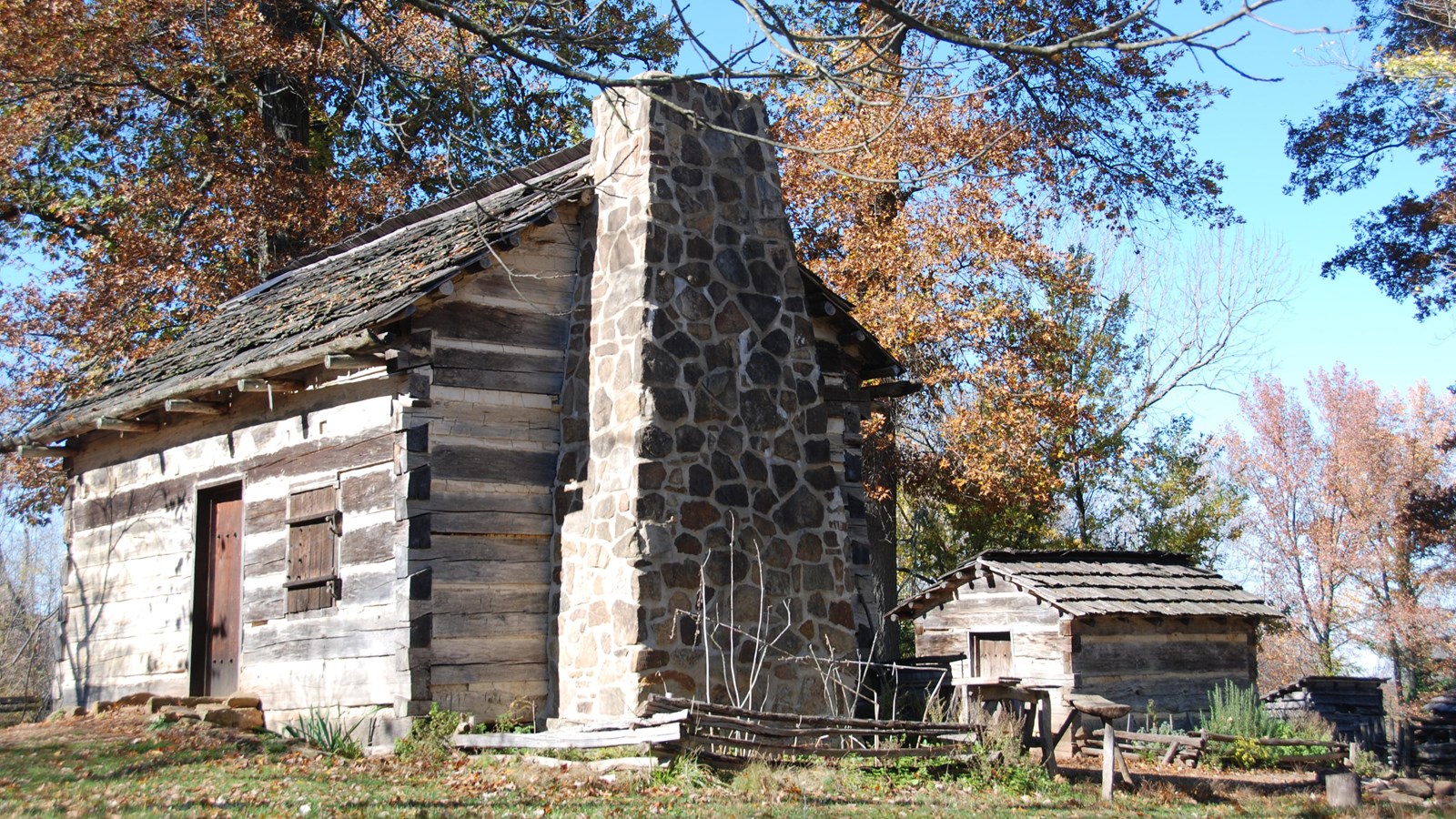Last updated: April 1, 2021
Place
Lincoln Living Historical Farm

NPS/Alexander
Benches/Seating, First Aid Kit Available, Historical/Interpretive Information/Exhibits
Ask most people who have visited Lincoln Boyhood National Memorial what they remember most of their visit here, nine out of ten would say something about the Living Historical Farm. Let’s face it, for most visitors the farm is Lincoln Boyhood.
While it seeks to represent the earliest period of occupation here, the farm is actually the most recent addition to the park. It was not part of the state’s original development plan, which was much more concerned with the creation of a commemorative park, as evidenced by the construction of the two memorial halls and the cabin site memorial. It was not even part of the National Park Service’s initial development of the site, which envisioned the Exhibit Shelter as the primary point for interpreting the Thomas Lincoln farm. In fact, in terms of planning and development, the Lincoln Living Historical Farm was almost an afterthought. The story of its creation is a good illustration of how changing perceptions of our history have shaped the way in which it is interpreted.
Early development of the park was influenced by the traditional commemorative view of history, that is, it was designed to serve as a memorial to Abraham Lincoln and his mother. This was to be a place where visitors could “remember” the early life of a great American. To simply be in this place where Abraham Lincoln grew up was thought to be enough. But by the late 1960s, the general view of history began to change. Larger changes in society, placing more emphasis on the “common” man, began to take place. People were, generally speaking, less satisfied to simply “remember,” they wanted to know more about what life was actually like for the average person, and what it was like for “great Americans,” like
In 1966, the National Park Service became involved in this effort when it began working with the Department of Agriculture and the Smithsonian Institution in a joint venture to establish a nationwide system of farms representing a variety of regions and time periods. NPS Director George Hartzog was an early proponent of the idea and, following a visit to the park in 1968, selected Lincoln Boyhood as one of the sites for such development. It was a popular idea, both with Superintendent Al Banton, who began making plans, and with Congressman Winfield Denton, who helped obtain the necessary appropriations.
At Hartzog’s direction, historian Ed Bearss completed an extensive research report that laid the groundwork for the development of the farm at Lincoln Boyhood. Based on it the location of the buildings, the orchard, the fields, and the kitchen garden were determined.
In February 1968, clearing of the site began. In March, a construction crew of ten men, all local residents, some of whom were skilled in log construction, were hired. Progress on the project was hastened by the decision to use logs from existing structures in
On
The presence of the buildings, though, did not make the farm “living.” That effect was achieved by the addition of interpreters in pioneer clothing who “worked” the farm using historically authentic tools and methods. Early interpretation was intentionally unstructured so as to more closely depict a daily routine of life. That pattern has continued, largely unchanged, until today.
In the years since its creation, the Lincoln Living Historical Farm has become a solidly entrenched part of the Lincoln Boyhood National Memorial. In successfully re-creating for visitors a sense of what life was like on the
History Highlights for Reflection Tour:
The Lincoln Living Historical Farm does not retain any of the original structures from Abraham Lincoln's time but was built to depict a typical farm of 1820s Indiana.The Farm contains several buildings; a log cabin, carpenter shop, barn, smoke house, and chicken coop. There is also a kitchen garden, herb garden, and crop fields.Everything the Lincolns raised was either totally consumed or recycled. Nothing was wasted. They derived their living from the land and forest around them. When the farm is staffed, staff members dress in period clothing to demonstrate the daily activities at the farm, the same things the Lincolns did when they lived here. Examples of the chores are: chopping firewood, milking the cow, and feeding the horses, chickens, sheep and cow, cooking, sewing, quilt-making, working in the garden and fields, splitting rails, and riving shingles, plowing, planting, cultivating, and harvesting of the crops.
Reflection Questions:
- Photographers and Videographers capture still photos and/or video at the site.
- Journalist ask an Interview Question while On The Move to the next stop: “What would you enjoy about life on the farm? What would you not enjoy about life on the farm? What books would you read by the fire like young Abraham Lincoln did?”
